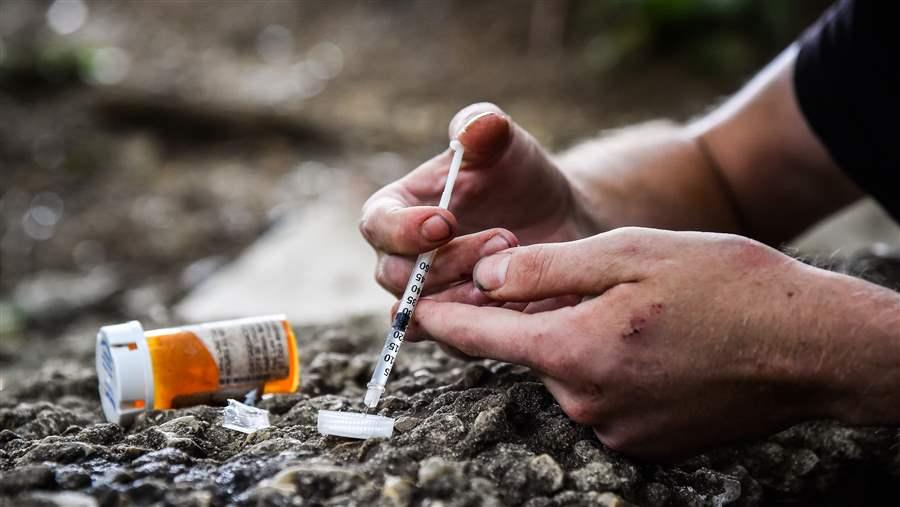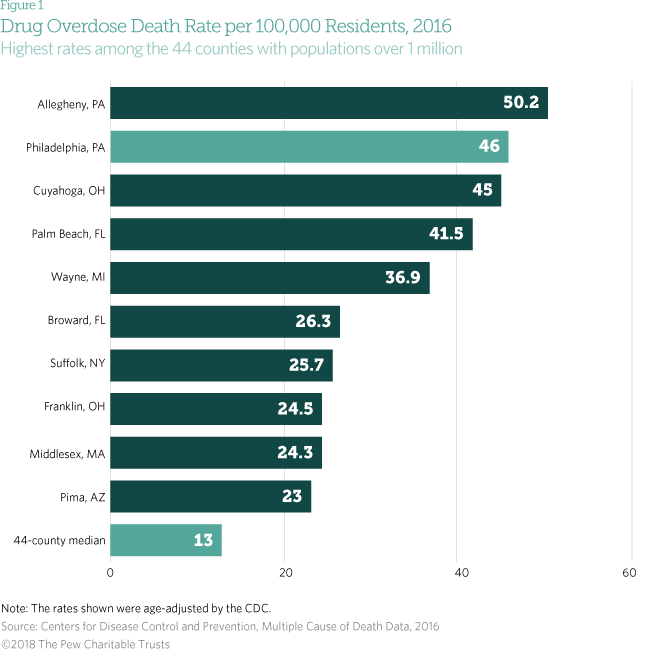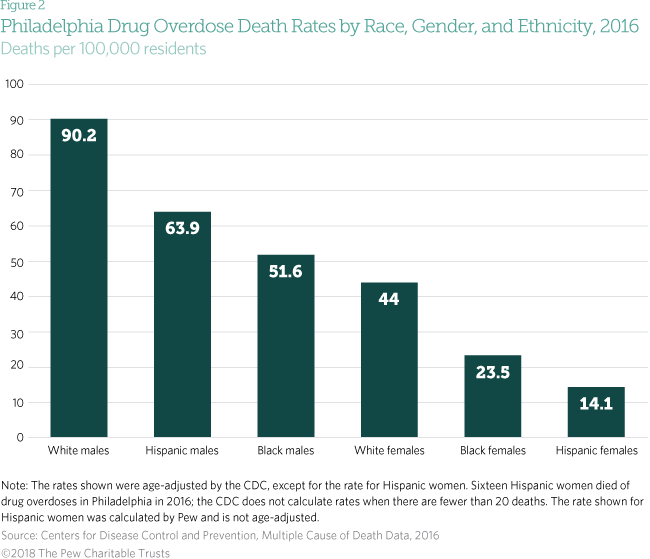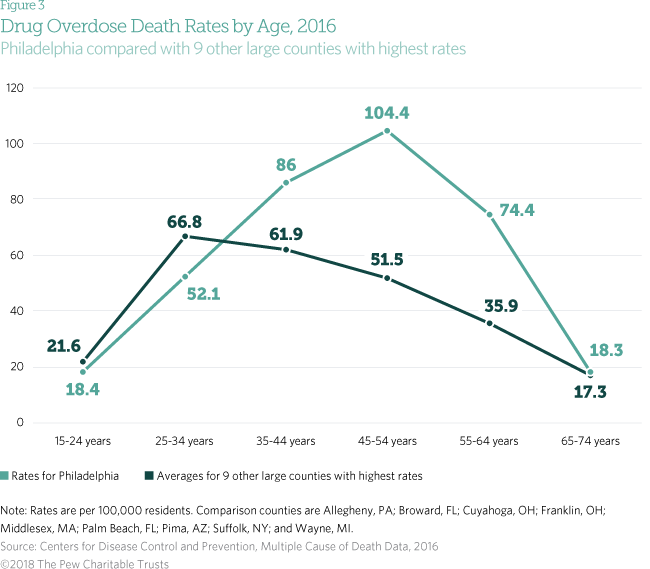Philadelphia’s Drug Overdose Death Rate Among Highest in Nation
In 2016, figure outpaced all but 1 of 44 largest counties, reflecting opioids’ impact

A man prepares a shot of heroin and cocaine near train tracks in the Kensington section of Philadelphia.
Salwan Georges/The Washington Post/Getty ImagesPhiladelphia had the second-highest rate of drug overdose deaths in 2016 among the nation’s 44 counties with over 1 million residents: 46 per 100,000 residents, with most attributed to the misuse of opioids. Only Allegheny County, which includes the city of Pittsburgh, had a higher rate.
Among other counties with the highest rates were Cuyahoga County, Ohio, which includes Cleveland; Palm Beach County, Florida; and Wayne County, Michigan, which includes Detroit. The national data compiled by the Centers for Disease Control and Prevention (CDC) are available only at the county, rather than the municipal, level; Philadelphia is both a city and a county. Some jurisdictions with populations below 1 million, including the city of Baltimore, recorded higher death rates in 2016.
The CDC bases the rate on the number of residents who died from drug overdoses during a given year—regardless of where the overdoses occurred. According to the agency, 719 Philadelphians died of drug overdoses in 2016. There were 907 drug deaths in the city that year, recorded by Philadelphia’s Department of Public Health, mostly linked to opioids. That number includes people who were not Philadelphia residents but does not include Philadelphians who died elsewhere.
Being near the top of this list is nothing new for Philadelphia. In 1999, the first year the CDC collected county numbers on overdose deaths, Philadelphia had the highest drug death rate among counties with populations of at least 1 million. Still, the rate was much lower then at 18.7 per 100,000 residents. Most of the other counties on the 1999 list—including those representing the boroughs of the Bronx, Manhattan, and Brooklyn in New York City—are not on the 2016 list.
For the 44 counties examined by the CDC in 1999, the median rate was 5.7 deaths per 100,000 residents, less than half the 13 per 100,000 found in the most recent numbers. That year, Pennsylvania’s Allegheny County ranked ninth, with a rate of 8.8 overdose deaths per 100,000 residents, a fraction of its 2016 rate of 50.2 per 100,000, which led the nation.
Rising opioid misuse and dependence has driven the increase in drug overdose deaths. According to Philadelphia’s public health department, more than 80 percent of the 2016 drug overdose deaths involved opioids. City officials estimate that the 2017 death toll will jump by nearly 300 to about 1,200, up about one-third in a single year. Many more Philadelphians than in 1999 are struggling with opioid dependence, whether in the form of illegal heroin or legally produced pharmaceuticals, and the impact on families, communities, and the economy is far-reaching.
Local health department officials say the drug overdose problem is different from 15 or 20 years ago. Although opioids were a major contributor then, other drugs, such as cocaine and “crack cocaine,” accounted for about a third of deaths, more than is the case now. Since then, opioid-related deaths have gone up sharply, including, in recent years, a rise in those involving fentanyl.
The rates are age-adjusted by the CDC so that comparisons among jurisdictions are not skewed by one county having a significantly younger or older population than another. The agency does not make the same calculations within individual age groups. Drug overdoses ruled homicides or suicides are not included in the statistics.
The data help provide a demographic picture of overdose victims in Philadelphia. For instance, from 2014 through 2016, the overall rate of drug overdose deaths was higher for men than for women and for whites than for blacks and Hispanics. Looking at gender and race/ethnicity combined, the highest rates have been among white men, while the lowest have been among Hispanic women. (See Figure 2.)
In terms of age, those who died of drug overdoses in Philadelphia in 2016 looked different than in the other counties listed in Figure 1. In Philadelphia, the hardest-hit were 45- to 54-year-olds. The death rate for this group was 104.4 per 100,000, more than double the rate for the city as a whole and double the rate for that age group in the other large counties in the top 10 for total overdose deaths. Philadelphia’s rate also was much higher than the other counties’ in the 55 to 64 age group. Both of these numbers may be partly due to continuing cocaine use among older residents. Philadelphia’s rate was lower than the other counties’ among 25- to 34-year-olds.
The most recent treatment data from Philadelphia’s Department of Behavioral Health, as reported by the National Drug Early Warning System, suggest that, relative to heroin addicts, a larger proportion of cocaine users are at least 45. The data also indicate that large-scale drug abuse has been a problem in Philadelphia longer than in many of the other counties. For that reason, city health officials say, a larger percentage of Philadelphia’s overdose victims may be older residents who have long struggled with substance use.
Larry Eichel directs Pew’s Philadelphia research initiative; Meagan Pharis is a researcher on the team.

















